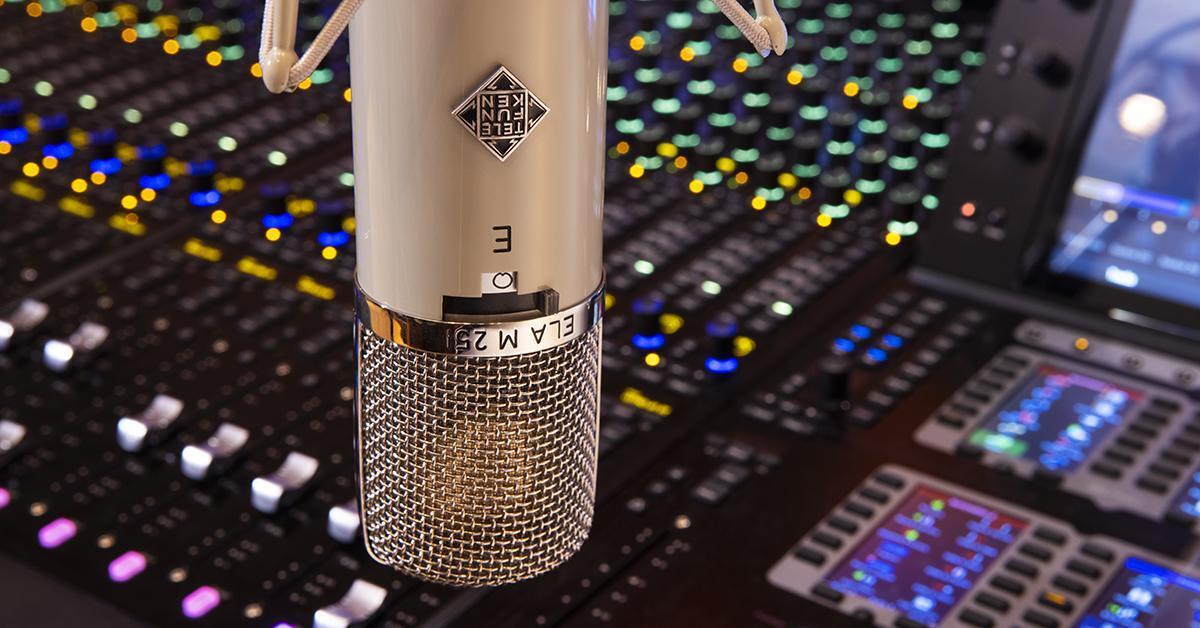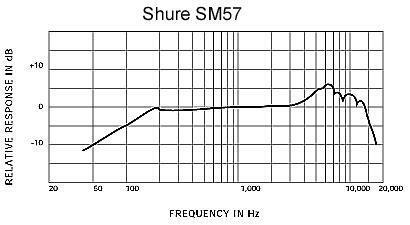How to choose a studio microphone
Professional recording engineers know that creative microphone selection is an essential ingredient in every great recording. If you’re new to recording, however, the subject of microphones is probably shrouded in mystery. With a bit of studio experience under your belt, you learn that certain studio microphones work well for recording particular instruments, but without an understanding of acoustic theory, you likely won’t understand why. Do you reach for a dynamic or a condenser microphone? Tube or solid-state? With so many types of studio microphones to choose from, it can seem overwhelming, so a basic understanding of microphone types and their uses will serve you well. A bad mic choice usually comes back to haunt you – sticking out like a sore thumb in the mix – but not to fear! Sweetwater’s Studio Microphone Buying Guide unravels the mysteries of the microphone, putting you on the path to awesome-sounding recordings. And as always, Sweetwater’s microphone experts can help you choose the best mic for you. Call one of our expert Sales Engineer’s at (800) 222-4700 to talk microphones today!
Buying Microphones at Sweetwater is Better!
With an incredible selection of the best mics at every prices point, FREE expert guidance from your personal Sales Engineer, and valuable extras like our 2-year Total Confidence Coverage Warranty, Sweetwater gives music makers more than any other retailer. For friendly, expert guidance, call a Sales Engineer now at (800) 222-4700!
- Types of microphones
- How to read a microphone frequency response chart
- Understanding microphone polar patterns
- Understanding microphone diaphragm sizes
- Typical microphone applications
Types of microphones
Dynamic Microphones
In a dynamic microphone, the audio signal is generated by the motion of a conductor within a magnetic field. In most dynamic mics, a very thin, lightweight diaphragm moves in response to sound pressure. The diaphragm’s motion causes a voice coil suspended in a magnetic field to move, generating a small electric current. Dynamic microphones are less sensitive (to sound pressure levels and high frequencies) than condenser mics, and generally can take more punishment. They also tend to be less expensive. Dynamics are perfect for recording drums and electric guitars. The most popular snare microphone of all time is the Shure SM57 (also great on guitar amps). Many engineers swear by the Sennheiser MD421 on toms. The purpose-built AKG D112 dynamic microphone is an excellent choice for bass drum.

Condenser Microphones
When it’s absolute fidelity to the source you’re after, reach for a condenser microphone. Condensers are more responsive to the “speed” and nuances of sound waves than dynamic microphones. This simple mechanical system consists of a thin stretched conductive diaphragm placed close to a metal disk (backplate). This arrangement creates a capacitor which is given its electric charge by an external voltage source – a battery or dedicated power supply, or phantom power supplied by your mixer. The microphone’s diaphragm vibrates slightly in response to sound pressure, causing the capacitance to vary and producing a voltage variation – the signal output of the microphone. Condenser mics come in both solid-state and tube variations and a wide variety of shapes and sizes – but they all function according to these principles.

Ribbon Microphones
Used extensively in the golden age of radio, ribbon microphones were the first commercially successful directional microphones. Today, ribbon mics are enjoying a comeback, thanks to the efforts of a handful of companies such as Royer. Ribbon mics respond to the velocity of air molecules moving a small element suspended in a strong magnetic field, rather than sound pressure level (SPL), which is what “excites” most other microphone types. In studio applications this functional difference isn’t important, although it can be critical during an exterior location recording on a windy day! Vintage ribbon microphones such as the RCA 44 and 77DX were notoriously delicate; today’s ribbon mics – such as the Royer R121 and R122 – are designed to handle the rigors of daily studio use.

USB Microphones
A recent development in microphone technology, the USB microphone contains all the elements of a traditional microphone: capsule, diaphragm, etc. Where it differs from other studio microphones is its inclusion of two additional circuits: an onboard preamp and an analog-to-digital (A/D) converter. The preamp makes it unnecessary for the USB mic to be connected to a mixer or external mic preamp. The A/D converter changes the mic’s output from analog (voltage) to digital (data), so it can be plugged directly into a computer and read by recording software. That makes mobile digital recording as easy as plugging in the microphone, launching your DAW software, and hitting record!

How to Read a Microphone Frequency Response Chart
A microphone’s frequency response chart can tell you a lot about which situations are appropriate for a given microphone and which situations are not. In theory, frequency response charts are generated at the factory by testing the microphones in an anechoic chamber. An anechoic chamber is a specially constructed room just for audio testing. The idea here is to create a controlled atmosphere where each microphone can be tested equally, so the room is completely dead, without any form of sound reflection. Generally, a speaker is set up in front of the microphone that is being tested and pink noise is played (pink noise is all frequencies with equal energy in every octave). The microphone is routed into a spectrum analyzer that measures the output and a frequency response chart is produced. The chart is usually over the 20Hz to 20kHz range, which is the range of human hearing.
So, how do you read it? The horizontal numbers in a microphone frequency response chart represent frequencies (again, usually over the 20 Hz to 20 kHz range) and the vertical numbers represents relative responses in dB (Decibels). As you look at a frequency response chart, you can tell how a given microphone performs at certain frequencies. How is this information helpful? Well, let’s look at the famous Shure SM57’s frequency response chart:
The frequency response of the SM57 microphone makes it especially good for certain instruments such as a snare drum because the fundamental frequency of the snare resides in the 150Hz to 250Hz range – right where the SM57 frequency response chart shows that the SM57 response is flat, or neutral. In other words, at this frequency, what you hear going into the microphone is what you will tend to hear coming out – nothing more, nothing less. The presence bump to the right of the chart is just where the frequency of the “snap” of the snare resides. In addition, its rolled off low end makes it great for de-accentuating the kick drum which is often very close in proximity. This combination is what most engineers are looking for in a great snare drum microphone – the ability to capture the true sound of the snare, accentuate its snap and reject other instruments in close proximity.
Understanding microphone polar patterns
Cardioid
Mics with a Cardioid polar pattern “hear” best what happens in front of them while rejecting sound from the sides and rear. The graphic representation of the pattern resembles a heart (thus, “cardioid” shape. The ability to reject sound from the rear makes Cardioid patterns useful in multi-miking situations, and where it’s not desirable to capture a large amount of room ambience. Popular in both studio and live use (where rear rejection cuts down on feedback and ambient noise), Cardioid microphones are used for a very high percentage of microphone applications. Keep in mind that like all non-omnidirectional mics, Cardioid mics will exhibit proximity effect (increased bass response when the mic is very close to the sound source).
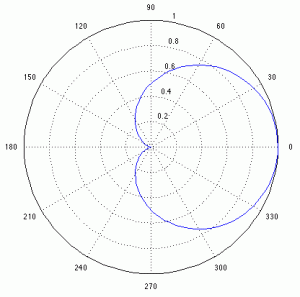
Supercardioid and Hypercardioid
A Supercardioid polar pattern is more directional than Cardioid; Hypercardioid even more so. Unlike Cardioid, both of these polar patterns have sensitive rear lobes (smaller in the Supercardioid) that pick up sound, which can make positioning these highly-directional mics somewhat tricky.
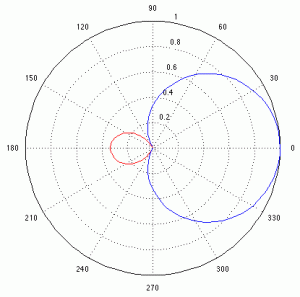
Omnidirectional
Omnidirectional microphones detect sound equally from all directions. The graphic representation of the pattern is a circle. An omni microphone will not exhibit a pronounced proximity effect. All microphones are born omnidirectional. Additional engineering is then applied to create directional polar patterns. Omnis are great studio microphones for capturing room sound along with whatever you’re recording.
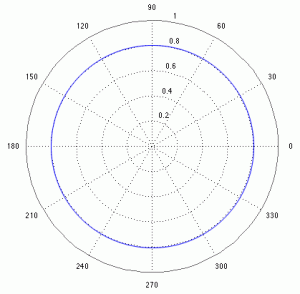
Figure-8
A Figure-8 polar pattern is one in which the microphone is equally sensitive to sounds picked up from front and back, but rejects sounds coming from the sides. This produces a pattern that looks like a “figure-8”, where the mic capsule is at the point of crossover on the 8. This microphone pattern is also known as bi-directional.
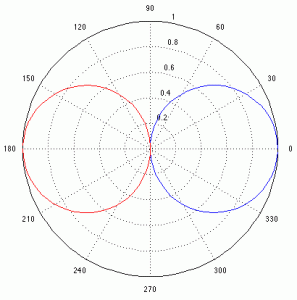
Multiple Pattern
Many professional condenser microphones have switchable polar patterns. Omnidirectional, Cardioid, and Figure-8 patterns are typically included. An extreme example is AKG’s C12VR – which sports the aforementioned patterns, plus six intermediate settings, for a total of nine polar patterns!
Shop Microphones with multiple patterns
Understanding microphone diaphragm sizes
Why Size Matters
Condenser and dynamic mics are classified according to the size of their capsule. Traditionally this has resulted in two classes: large diaphragm and small diaphragm; each has its place in a well-equipped studio. The medium diaphragm mic – a relatively recent development – can be considered a hybrid, blending characteristics of both large- and small-diaphragm mics.
Large Diaphragm
Large-diaphragm condenser microphones such as the venerable Neumann U87 are a studio staple. From vocals to strings to brass to percussion, you can use large-diaphragm condenser mics to record just about anything. The multiple pickup patterns and pads found on many large-diaphragm condensers make these the most versatile mics in your studio. There are also large-diaphragm dynamic mics that are well suited to capturing loud sources with robust bass energy (such as kick drum or toms). The esteemed Sennheiser MD421 microphone falls into this category.

Medium Diaphragm
The definition of medium diaphragm is a potentially controversial subject. Historically there have been large-diaphragm and small-diaphragm mics, but more recently the medium size has begun carving out its own category, though not everyone agrees on the precise upper and lower limits. Most professionals and manufacturers agree that any microphone with a diaphragm of roughly 5/8″ to 3/4″ in diameter can be characterized as medium diaphragm. Generally speaking, medium-diaphragm microphones tend to do a good job of accurately catching transients and high frequency content (as a small diaphragm would) while delivering a slightly fuller, round and potentially warmer sound (as a large diaphragm might).

Small Diaphragm
Often perceived by the newbie recordist as living in the shadow of its large diaphragm counterpart, small-diaphragm condenser mics actually shine in applications that leave their bigger cousins struggling to keep up. Their characteristic ultra-responsiveness is precisely due to their smaller, lighter-mass diaphragms. The hands-down studio microphone choice for acoustic guitar, hi-hat, harp – or any instrument with sharp transients and extended overtones, many recording engineers actually favor small diaphragm mics as drum overheads. A bonus with these bantamweights (often referred to as pencil mics, due to their typically thin cylindrical shape) is that they are easy to position.

Typical microphone applications
Drums
For starters, you’ll normally want to stick with cardioid dynamic mics on the drums, a cardioid small diaphragm condenser on the hi-hat, and a matched pair of either large- or small-diaphragm condensers for the overheads. Note that condenser microphones can certainly be used on the snare and toms (and for the more adventurous, even kick). It’s a case of, once you know the rules, feel free to break ’em. After all, you’re an artist, painting with sound…
Drum microphone placement requires a lot of experimentation: ask the drummer to play, listen; move a mic a few inches, listen again. Better yet, stay in the control room and have your assistant (if you’re fortunate enough to have one) move the mics while you listen. With some experience, the process becomes streamlined: you’ll know which mics you like, and where you’re going to place them. But that’s just a starting point; even professional recording engineers will change mics and positioning on an inspired whim.
Electric Guitar
No need to over-think this one. If you can spare just one studio microphone, use a dynamic (the iconic Shure SM57, for example), positioned close on the speaker cabinet. If you have a large-diaphragm condenser, try placing it a few feet back (if the source is loud, engage the pad, if the mic has one). You can mix these studio microphones together at the console, or record them to separate tracks, if tracks are not at a premium. If you’re overdubbing the guitar (or you can place the guitar cab in another room during tracking), you don’t have to be concerned with (drum) leakage. Assuming the cab’s in a decent-sounding room, experiment by backing up your condenser mic to soak up more room sound. If the microphone has multiple polar patterns, try switching it to omnidirectional. You can, of course, use more than two mics – just watch your phase relationships.
Acoustic Guitar
A small-diaphragm cardioid condenser microphone is preferable here. As a starting point, aim it down, looking at the 12th fret, from about 6-8 inches away. Large diaphragm condensers can also work nicely on acoustic guitars, as well as ribbon mics. Have fun experimenting with different microphones and placements to find what works best for you.
Vocals
When it comes time to overdub vocals, you’ll want a large diaphragm condenser mic. For a lead vocal, you should match the mic to the vocalist – who may also have a personal mic preference. The best way to approach this is to set up three or four likely mics, and have the singer sing the same (critical) section of the song into each of them. Record each of these passes to individual tracks, then invite the singer into the control room for playback to decide which studio microphone best matches his or her voice (and the song).
Acoustic Piano
Usually recorded in stereo. Use two large-diaphragm condenser mics, or a large diaphragm for the low strings, and a small diaphragm for the highs. Piano mic placement is highly variable, so a certain amount of experimentation is in order. There are also piano microphone kits that take the guesswork out of mic choice and placement.
Strings
Violins, violas, cellos, double bass. Just about any high-quality condenser microphone will do. Or, if you’re fortunate enough to have a ribbon mic, this may well be what you prefer.
Brass and Reeds
Ribbon microphones are incredibly flattering on brass instruments. And for reeds and double reeds, ribbons will capture the tone and pick up less of the mechanical sound of the keys. Large or small diaphragm condensers work well too.
We hope you’ve found this Studio Microphone Buying Guide helpful. And if you have questions about studio microphones, remember that your knowledgeable Sweetwater Sales Engineer is just a phone call away:(800) 222-4700. Now go record something cool!


